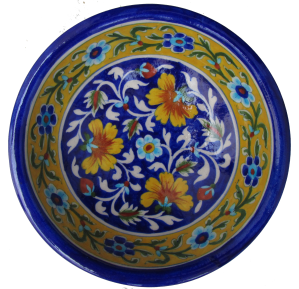
Dolls representing a couple are a ubiquitous feature in almost all the indigenous doll set traditions of India. They can be just playthings for children enacting a happy household with a husband and wife or can become larger than life divine beings, for example, Gauri and Ishar in the grand Gangaur celebrations in Rajasthan. The Marapachi dolls known as Marapachi bommai (meaning wooden dolls) are one of such doll sets which has several functions. They can simply be mere toys for children, a blessing in the form of a gift to a new bride or an important idol on religious festivals. Always in a pair, male and female, these dolls are also called Raja-Rani dolls.
In the Southern states of Andhra Pradesh, Tamil Nadu and Karnataka, during the Navaraathri (nine nights) festival, these dolls play an important role in the Bommai Kolu (festival of dolls) celebrations. This is observed for nine days starting soon after the new moon of the Tamil month Purattaasi (September-October).[i] The members of the house would decorate richly coloured clay figurines in a stepped platform generally in odd numbers, between 5 to 11 steps. Each doll is carefully placed according to theme chosen by the family, representing Gods, mythical beings and sages. The Marapachi dolls which are also a part of these decorations will be dressed with clothes and jewellery for the occasion. Sometimes, one can identify the dolls belonging to a certain caste by the clothes they were adorned with.
The dolls were traditionally made of Red Sanders wood also known as Red Sandalwood but a substitute wood is used now as government imposed a ban on the widespread use of sandalwood.[ii] There were other wood also used for making these dolls which were considered having medicinal properties. Being used as playthings by children, the nibbling of the wood was believed to be harmless and in fact imperative in releasing medicinal juices into the body. Today, the use of other substitute wood and colour dyes to make it look dark has ended the medicinal properties of the traditional wood.
Most of these dolls are passed on from generation to generation by mothers, mother in laws or grandmothers and becomes a sentimental part of the family heirlooms. They are cleaned and taken out every year for the Bommai Kolu with joy and happiness.
[i] Nanditha Krishna. Living Traditions of India: Arts and Crafts of Tamil Nadu. (Ahmedabad: Mapin Publishing Pvt. Ltd., 1992), 158.
[ii] Aditi Ranjan and M P Ranjan, eds., Crafts of India: Handmade in India. (New Delhi: Council of Handicraft Development Corporation, COHANDS, 2007), 292.


Very nice article. I love it
LikeLike
Thank you so much!
LikeLike